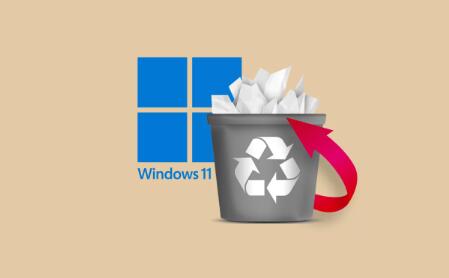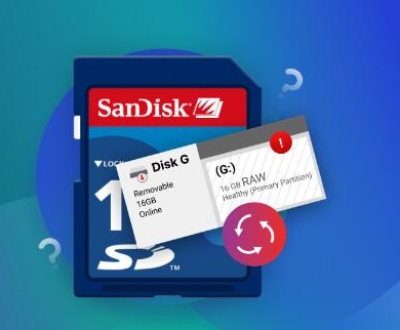Losing files is always frustrating, but luckily, most files that are deleted from your computer don’t immediately vanish into thin air. If you have emptied the Recycle Bin but want to restore the deleted files, there’s still hope.
1. File Deletion
Understanding How File Deletion Works
When you delete a file on your computer, it isn’t immediately gone. In most cases, files are moved to the Recycle Bin first, where they are temporarily stored. The idea is that this gives users a chance to recover files they might have accidentally deleted. When you empty the Recycle Bin, however, things get more complicated.
While the file is technically marked as deleted, the data isn’t truly gone. Instead, the space on your hard drive that was previously occupied by the file is simply marked as “available.” As long as no new data overwrites that space, it is often possible to recover the deleted file. This is where recovery methods come into play.

The Recycle Bin Mechanism
The Recycle Bin is a feature in Windows that acts as a temporary holding area for files that you have deleted. When you delete a file, Windows moves it to the Recycle Bin instead of removing it from the system immediately. This gives you a chance to recover the file if you realize it was deleted by mistake.
However, once you empty the Recycle Bin, the files are no longer in the Recycle Bin, but they might still be recoverable if you act quickly.
2. Checking the Recycle Bin Again
Before you get into more complicated recovery methods, the first thing you should do is check the Recycle Bin once more. It may seem obvious, but it’s worth checking again, especially if you accidentally deleted a file while trying to clean up your computer.
Steps to Check the Recycle Bin:
Open the Recycle Bin: Double-click the Recycle Bin icon on your desktop or search for it in the Start menu.
Search for Your Files: Once the Recycle Bin is open, scroll through or use the search box to find the file you want to restore.
Restore Your Files: Right-click on the file and select “Restore.” The file will be returned to its original location on your computer.
If you’ve already emptied the Recycle Bin, don’t worry—there are still ways to recover those deleted files.
3. Restoring Files Using Built-in Windows Tools
Windows provides a few built-in features that can help you restore deleted files, even if they are no longer in the Recycle Bin. These tools include File History, System Restore, and Previous Versions (Shadow Copies).
Windows File History
File History is a feature in Windows that automatically backs up your files. If you had File History enabled before the file was deleted, you might be able to restore it.
How to Use File History:
Open File Explorer: Navigate to the folder where the deleted file was originally stored.
Click on the Home Tab: In the ribbon at the top, click the “History” button.
Restore Previous Versions: File Explorer will show a list of previous versions of the folder. Use the arrows to browse through different versions and find the one that contains the file you want to restore.
Click Restore: Once you’ve found the version with the file, select it and click “Restore” to return the file to its original location.
System Restore
System Restore allows you to restore your system to a previous point in time. It may not restore individual files, but if you have a system restore point that was created before the file was deleted, you might be able to recover the file by reverting your system back to that point.
How to Use System Restore:
Open System Restore: Type “System Restore” into the Start menu and select “Create a restore point.”
System Properties Window: In the System Properties window, click the “System Restore” button.
Choose a Restore Point: Select a restore point that was created before the files were deleted and follow the on-screen instructions to restore your system.
Restart Your PC: Once the process is complete, your computer will restart, and your system will return to the state it was in at the time of the selected restore point.
Previous Versions (Shadow Copies)
Windows automatically creates backup copies of your files through a feature known as Shadow Copies, which may allow you to restore a previous version of a file or folder even after it has been deleted.
How to Use Previous Versions:
Right-click the Folder: Navigate to the folder where the deleted file was originally located and right-click it.
Select Properties: From the context menu, select “Properties.”
Go to the Previous Versions Tab: In the Properties window, go to the “Previous Versions” tab.
Select a Version: If there are previous versions of the folder, you will see them listed here. Select a version from a date before the file was deleted.
Click Restore: Click the “Restore” button to recover the selected version of the folder.
4. Third-Party Data Recovery Software
Panda Assistant is an intuitive and powerful software solution designed to help users with data recovery, file management, and system optimization. Whether you’re facing data loss from a corrupted drive, accidental file deletion, or a hardware failure, Panda Assistant aims to provide an easy-to-use platform that can restore lost data and optimize system performance.
Data Recovery Capabilities
One of the standout features of Panda Assistant is its data recovery functionality. The software is equipped with advanced algorithms that can recover deleted, lost, or corrupted files from various storage devices, including hard drives, SSDs, USB drives, memory cards, and more. With its user-friendly interface, Panda Assistant guides users through the recovery process step by step, making it accessible even for those with minimal technical expertise.
Panda Assistant supports multiple file types, ranging from documents and images to videos and audio files, ensuring that no matter what type of data has been lost, the software will have the necessary tools to recover it. Additionally, it offers deep scan functionality, which ensures thorough data recovery even in complex situations such as formatted drives or partitions.
File Management
Panda Assistant also excels in file management. The software provides users with the ability to organize, sort, and manage their files efficiently. It can scan devices and identify large, duplicate, or unused files, helping users free up valuable storage space. By identifying and removing unnecessary files, Panda Assistant can help optimize the performance of your device and improve overall system speed.
Another key file management feature is the ability to securely erase files. This ensures that sensitive data, like financial documents or personal photos, are completely wiped from your device, making recovery impossible for anyone attempting to retrieve them.
System Optimization
Beyond file recovery and management, Panda Assistant offers several tools to enhance the performance of your computer or device. The optimization suite includes disk cleaning, registry fixes, and startup management, among other features. By performing these routine maintenance tasks, Panda Assistant helps keep your system running smoothly, reducing lag and improving overall responsiveness.
The software also includes real-time monitoring tools, which help you keep track of system performance and detect any issues before they become serious problems. With proactive alerts and recommendations, Panda Assistant enables users to address potential issues quickly, preventing data loss and hardware damage.
Compatibility and Ease of Use
Panda Assistant is compatible with a wide range of devices and operating systems, including Windows, macOS, and Linux. Its clean, modern interface is designed for ease of use, with simple navigation and clear instructions, ensuring that even users with no technical background can use it effectively.
The software also provides comprehensive customer support, including an extensive knowledge base, video tutorials, and a dedicated support team to assist with any problems or questions.
5. Advanced Techniques for Hard Drive Recovery
If none of the above methods work, you may need to turn to more advanced techniques. These include using command-line tools or attempting a raw recovery.
Using Command Prompt for File Recovery
Command Prompt in Windows offers a set of commands that can help you recover deleted files, such as the “chkdsk” command.
How to Use Command Prompt for Recovery:
Open Command Prompt: Press Windows + R, type “cmd,” and press Enter.
Run chkdsk: Type chkdsk C: /f (replace C: with the appropriate drive letter) and press Enter. This will check the drive for errors and attempt to recover lost data.
Look for Recovered Files: Once the scan is complete, check the drive for recovered files.
Raw Recovery Method
Raw recovery is a more technical recovery process that uses specialized software to scan the raw sectors of the hard drive. This is typically used when other methods fail.
6. Preventing Future Data Loss
Best Practices for Data Backup
To avoid future data loss, you should implement regular data backup strategies. Here are a few methods to consider:
Use Cloud Storage: Services like Google Drive, Dropbox, and OneDrive offer automatic backups of your files.
Use External Drives: Regularly back up important files to an external hard drive or SSD.
Create System Images: Use Windows’ built-in backup tool to create full system images that you can restore later.
Cloud Storage Solutions
Cloud storage services are one of the best ways to ensure your files are protected from data loss. Many cloud providers offer automated file syncing, so you don’t have to manually back up files.
Restoring files deleted from the Recycle Bin is possible using a variety of methods. Whether you use built-in Windows tools like File History and System Restore, third-party recovery software like Recuva and EaseUS, or advanced techniques such as command-line utilities or raw recovery, there are plenty of options to explore.
To minimize the chances of losing important files in the future, regular backups using cloud storage or external drives are highly recommended. By staying proactive about your data management, you can prevent file loss and ensure your data remains safe.
About us and this blog
Panda Assistant is built on the latest data recovery algorithms, ensuring that no file is too damaged, too lost, or too corrupted to be recovered.
Request a free quote
We believe that data recovery shouldn’t be a daunting task. That’s why we’ve designed Panda Assistant to be as easy to use as it is powerful. With a few clicks, you can initiate a scan, preview recoverable files, and restore your data all within a matter of minutes.
Subscribe to our newsletter!
More from our blog
See all postsRecent Posts
- Retrieve deleted videos from sd card 2025-04-25
- How to retrieve damaged sd card? 2025-04-25
- Retrieve photos from sd card 2025-04-25

 Try lt Free
Try lt Free Recovery success rate of up to
Recovery success rate of up to









